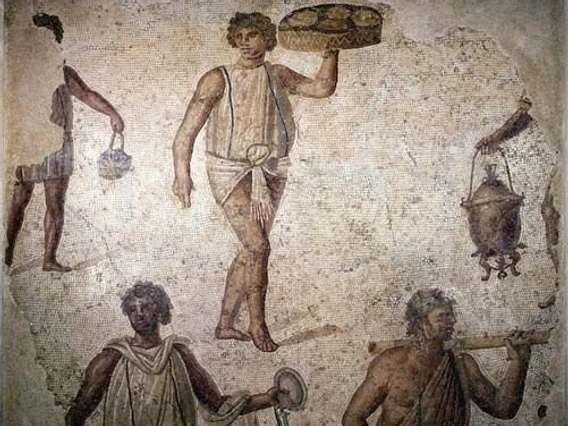
Fresco from Pompeii depicting a physician removing an arrowhead from the leg of Aeneas
In today’s world physicians are highly trained, well-compensated, respected members of society, while medical training is rigorously scientific, structured, demanding, and expensive. Virtually none of these adjectives can be applied to ancient Greek and Roman health care systems.
Upper-class Romans sometimes dabbled in medical matters, but they would not have wanted their children to become physicians. Physicians occupied a fairly low position in the ancient social order, with most people viewing them more like skilled craftsmen than professionals. Many were slaves who were purchased by wealthy citizens to care for their households or by city authorities to treat the general public. Some worked at healing sanctuaries, either as slaves who were owned by the god of the sanctuary or as freedmen, like Heracleion in our story. Most of them came from Greek or native stock, even those who cared for Romans.
Medical training in the Greek world consisted of working as an apprentice to an established physician, not attending a medical school to earn a degree. Medical treatises were few and far between, so the bulk of a physician’s education came from observing, asking questions, and applying treatments to live patients. Here and there a group of trainees might live and study together at a religious healing sanctuary like the ones at Pergamon and Carura that appear in our story, but even here their training did not include any formal curriculum or classrooms as in a modern school.
Greek medical theory was based more on philosophical speculation than scientific study. Greeks viewed the body as a mixture of the four fundamental elements of the universe: earth, air, water, and fire. These elements were represented in the body by four “humors” or fluids that circulated throughout the body: blood, phlegm, yellow bile, and black bile. In a healthy body, the humors were properly balanced and the organs worked as designed. A sick body resulted when the humors were thrown out of balance by some type of disorder. The task of the physician was not to diagnose the specific cause of the imbalance but to prescribe treatments that would restore the balance of the humors, including heating, cooling, dietary changes, medications, exercise, purging, and bleeding.
Needless to say, virtually none of this has any support from modern science. But knowing the basics of the ancient medical system can help us to understand why Heracleion and other physicians treat Lucius’s illness as they do in our story. In fact, the Greek view of the body and how it should be treated was so popular that it dominated Western medical practice until the modern era.



